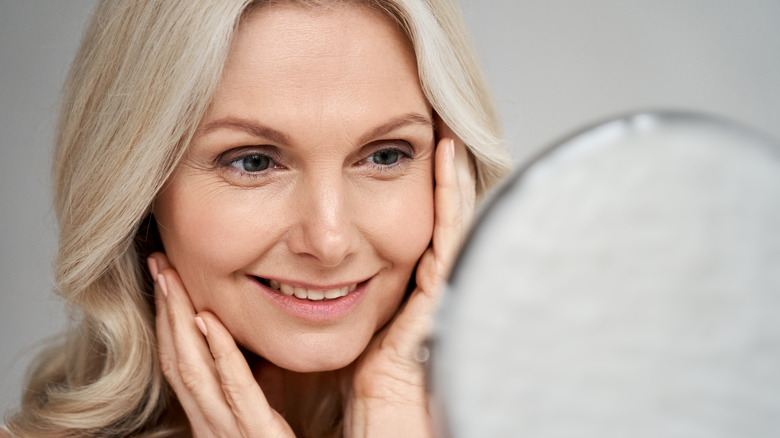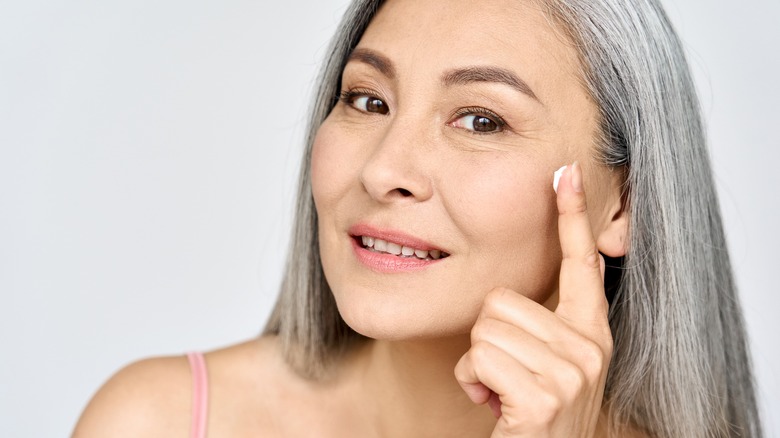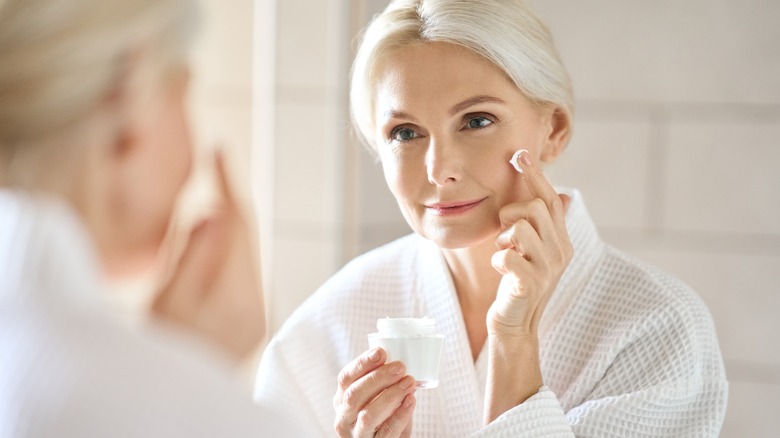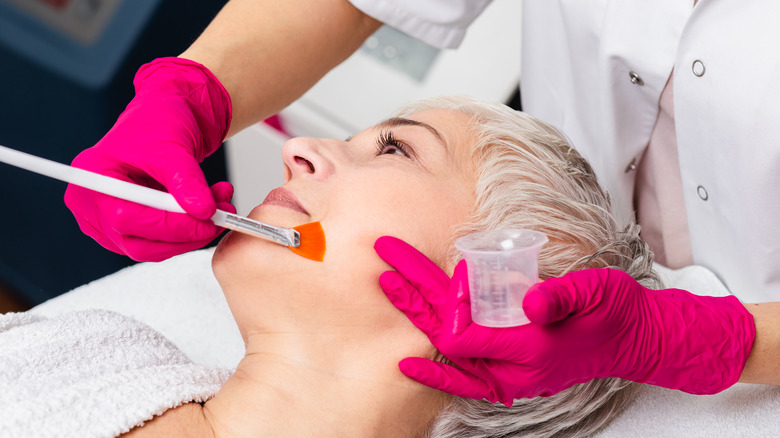Skincare Mistakes That May Be Causing Crepey Skin
Crepey skin occurs for many different reasons. It gets its name because it resembles crepe paper, and it can fill your complexion with fine lines and wrinkles, as well as thinning your skin and making it appear saggy. Crepey skin can happen on any part of the body, but it commonly occurs on the face. U.S. Dermatology Partners explains that it's most likely to happen on skin that's already thin. This can be under the eyes, on the neck and chest, on the inner thighs, and on the upper arms.
Growing older is one of the main reasons why crepey skin develops. However, dehydration, stress, hormonal changes, weight loss, and tobacco use can also cause it or magnify it. However, you can keep your skin looking youthful if you follow a skincare routine that keeps your skin hydrated and nourished. It's harder to get rid of crepey skin than to prevent it, so as you age, ensure that you take the necessary precautions for a healthy complexion.
Skipping SPF
SPF is an essential step in morning skincare routines. No matter your age, using sunscreen is beneficial. One of the main reasons that people get crepey skin, other than age, is from exposure to the ultraviolet rays that the sun casts off during the day. The same UV light is also used in tanning beds. It's so damaging to the skin because it breaks the collagen and elastic fibers that hold the skin tissue together, according to Providence. While collagen structures can heal, elastic fibers can't. Over time, this will cause your skin to be covered in wrinkles and fine lines.
To prevent this from happening, you need to wear SPF every day. The face, neck, and upper chest are most likely to become crepey from sun damage, so be sure to apply sunscreen to these parts of your body. Men should remember to use it on their scalp as they age and are more likely to start balding. And depending on where you live, you will need to use a specific strength of SPF or higher. Northern areas that don't get a lot of sun need at least an SPF of 30. However, tropical locations, areas around water, and places up in the mountains will need a minimum of SPF 50 to 70.
Forgetting moisturizer
Moisturizer is the key to locking in all your previous skincare steps. That is why it's often the final product people use in their routines. There are many different formulas made for each skin type, and when dealing with crepey skin, you should look for a moisturizer with additional benefits. If you're having trouble deciding which is the best for you, consider talking to a dermatologist.
First, you should choose a cream formula over gels or other lightweight options. Creams are heavy moisturizers that provide your skin with the most water. Water's Edge Dermatology recommends reading the labels for ingredients like retinol, hyaluronic acid, niacinamide, and ceramides, as these additions will help your skin increase skin cell production. They also make it look plump instead of loose and wrinkled by repairing your skin's moisture barrier so it can hold onto water. It would be best if you use moisturizer at least once a day, but ideally, you should apply some every time you wash your face or shower.
Over-exfoliating
Even though many skincare products are beneficial for preventing and treating crepey skin, overusing them will oftentimes result in the opposite effect, and exfoliating is one of the steps that can be taken too far. You can accidentally damage your skin if you use too many physical or chemical exfoliants, so rather than looking youthful and dewy, it will look rough, dull, and crepey. Female explains that overusing these products will also make it harder for the rest of your routine to work correctly, as your serums and moisturizers won't be able to penetrate the top layers of skin effectively. Depending on your skin type, your complexion may even look dehydrated or overly oily.
The easiest way to resolve this issue is by reducing the number of times you exfoliate during the week. The potency of your products may also need to be adjusted. When appropriately used, exfoliants should make crepey skin look better by removing your dead cells and encouraging new growth. According to Dr. Cynthia Bailey Skincare, using physical scrubs with chemical exfoliants is the best way to achieve this. You should use these products after cleansing your skin and then follow up with the rest of your routine. However, avoid exfoliating and using retinol, BHAs, or AHAs on the same day.
Not adding collagen to your diet
Collagen is the key to keeping your skin youthful. As you age, your body produces less collagen, making your complexion appear crepey because it starts to sag and wrinkle. Not only does it keep the elastic fibers in your skin tissue healthy, but it also holds moisture in. Westlake Dermatology and Cosmetic Surgery explains that adding collagen to your body will prevent your face and décolletage from looking crepey. Fortunately, you can do this in two ways.
One method is to add collagen supplements to your water or morning coffee. These include collagen peptides and vitamins. However, there aren't many studies to support that these supplements are sufficiently absorbed by the body to aid your skin. Another way to get collagen is through your diet. There are plenty of foods that you can add to your meals to increase the amount of collagen and amino acids you put into your body. Some of these are bone broth, egg whites, chicken, and fish. Taking vitamin C will also help with collagen production. If you want to avoid taking vitamin C in pill form, you can eat more oranges and berries.




